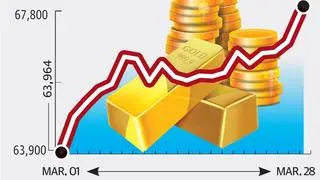Implied volatility is derived from an option price using the Black Scholes Merton (BSM) model. It arguably represents the market’s expected volatility of an underlying over the remaining life of an option. If so, all call strikes on an underlying should have the same implied volatility, if not all calls and puts for the same expiry series. Yet, implied volatilities of calls are different for the same expiry series. This week, we discuss the reason for such differences and the strategies to setup to gain from these differences in implied volatilities.
Volatility skew
A volatility skew graph plots the implied volatility of each strike for a given expiry series. A term structure of volatility plots implied volatility of same strikes across different expiry series. A combination of volatility skew graph and term structure of volatility creates a volatility surface (three-dimensional graph). This is typically used by institutional investors to price over-the-counter derivatives.
Returning to volatility skew graph, why does implied volatility differ for each strike? Note that time value of an option consists of time to expiry and implied volatility. Now, time to expiry is the same for all strikes for the same expiry series. Therefore, the difference in implied volatility arises because of the difference in the time value of the strikes. But why does time value for the same series differ between call strikes?
We know that time value is one component of an option price, the other being intrinsic value. The intrinsic value of an option moves one-to-one with its underlying, leaving no room for uncertainty in its pricing; it is the difference between the underlying price and the strike price of an ITM call. Therefore, when greater demand for a strike typically pushes the option price up, it must be the time value of the option that increases, resulting in higher implied volatility. So, differences in demand for various strikes can explain for the differences in implied volatility.
How should you take advantage of the volatility skew? If implied volatility between strikes for the same expiry series is significantly different, you can go long on a call with lower implied volatility and short on the call with higher implied volatility. Your position must neutralise (delta-neutral) the effect of the underlying’s directional movement on the option position. You can also consider going long on a strike with lower implied volatility and short on the same strike with higher implied volatility, using near-week and next-week Nifty options.
Optional reading
You must be mindful of comparing only strikes that are actively traded. Otherwise, you could be deriving implied volatility of an option with stale prices. For instance, 18300 strike may have last traded when the Nifty Index was at 18560. Therefore, deriving implied volatility using the last traded price but with the latest index value of 18606 may lead to wrong conclusions. It is optimal to consider at-the-money and three-four OTM strikes to setup volatility arbitrage trades.
The author offers training programmes for individuals for managing their personal investments









Comments
Comments have to be in English, and in full sentences. They cannot be abusive or personal. Please abide by our community guidelines for posting your comments.
We have migrated to a new commenting platform. If you are already a registered user of TheHindu Businessline and logged in, you may continue to engage with our articles. If you do not have an account please register and login to post comments. Users can access their older comments by logging into their accounts on Vuukle.